On 20 July 1969, the Apollo 11 Lunar Module landed on the Moon. The highlight of the mission was a 2.5-hour moonwalk, during which Neil Armstrong and Buzz Aldrin gathered soil and rock samples, planted a US flag, and basked in the glory of becoming the first human beings to set foot on another world. Five more crewed landings would follow over the next three years.
These were astonishing feats. Indeed, some folk find them all too astonishing. A recent YouGov poll found that 16 per cent of British people still cling to the conspiracy theory that the Moon landings were staged. It’s an idea that’s been around since the mid-1970s, with various reasons suggested for why the US government would want to orchestrate a hoax, from a need to win the Space Race, to a way of distracting the public from the Vietnam War.
Moon landing conspiracy theorists have come up with a number of pieces of ‘evidence’ for their beliefs. So we’ve decided to debunk them one by one.
“There are no stars in any of the photos”

If you believe the conspiracists on this one, then it was too complicated for NASA to get all the stars in the right place, so they left them out. Yes, you read that right.
Perhaps it’s easy to forget that even astronauts – gifted though they may be – still require light in order to see what they’re doing. That’s why all the Apollo moonwalks took place during the lunar day, in full Sun. The cameras were therefore set on short ‘daytime’ exposures (otherwise everything would have appeared dazzlingly bright). And these settings were not sensitive enough to pick up any stars.
“Show me a photo of a night football game under lights below an open sky, and point to any visible stars,” says spaceflight historian and analyst James Oberg.
Read more about the Moon landing (which definitely did happen):
- The Space Race: how Cold War tensions put a rocket under the quest for the Moon
- Nazis, magic and McCarthyism: the dark history of early American space exploration
“The footprints are too well-preserved”

If you go to the beach and walk in dry sand, your footprint collapses immediately. To leave a good print, you need to walk where it’s wet. But wait – there’s no moisture on the Moon.
In fact, lunar dust is different from sand. Grains of sand have been weathered by the seawater and the atmosphere to give them a rounded shape. So getting them to hold together is like trying to stack a pile of ping-pong balls.
“The dust on the Moon is actually ground-up rock, and under a microscope you can see it’s extremely sharp and rough, like volcanic ash,” says Dr Phil Plait, an astronomer and creator of the Bad Astronomy blog. “This acts like little hooks holding it together, so it keeps a print.” And as there’s no wind on the Moon, the prints will stay there for millions of years.
“Inconsistent shadows prove that artificial lights were used”
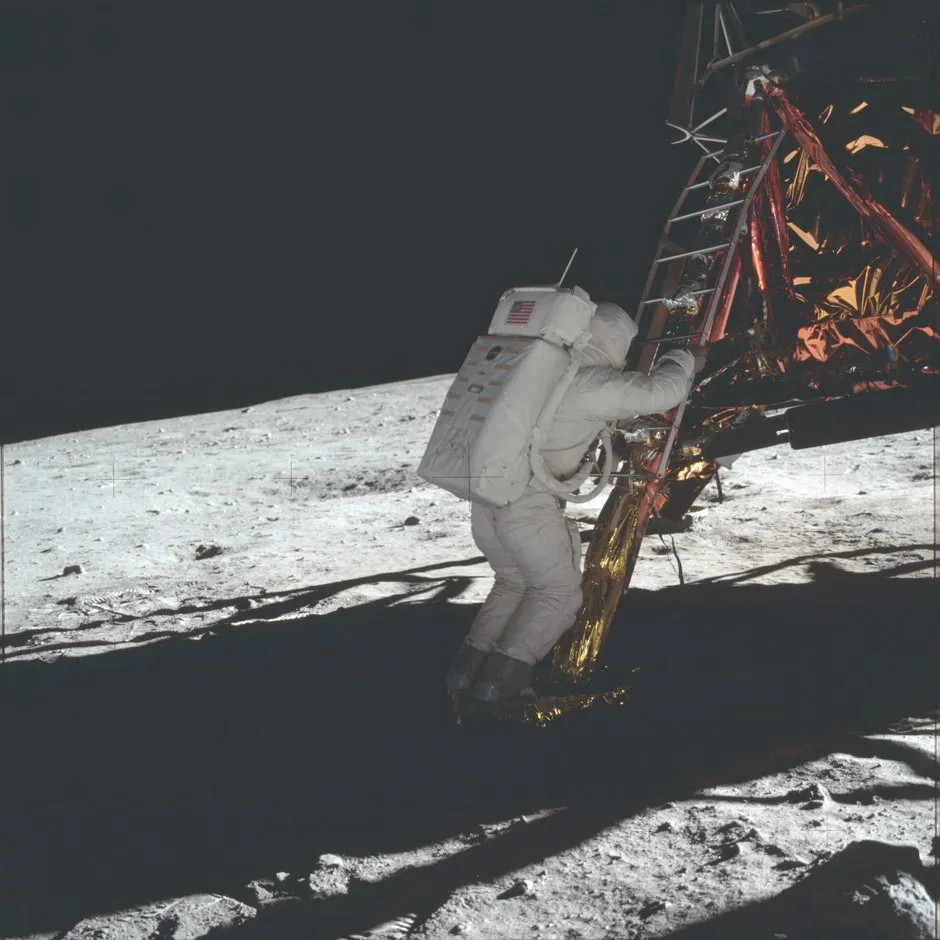
Some Apollo images reveal shadows on the Moon that are not parallel, leading conspiracy theorists to declare that the scenes must have been lit from multiple angles, like in a studio.
Uneven surface topography explains many of these cases, where subtle slopes dramatically alter the apparent orientation of shadows falling on them. Others are due to perspective – the geometrical effect that makes parallel lines appear to converge on a distant vanishing point.
One image in particular has been seized on by the Moon truther brigade, showing Aldrin standing in the shadow of the Lunar Module, yet brightly illuminated. Studio lights? Alas, not. The lunar surface reflects sunlight – a fact evident to anyone who’s been out after dark on a full Moon. So even though Aldrin is in shadow, the glow of the surrounding terrain, reflecting off his white spacesuit, makes him visible.
“The Lunar Module made no crater or dust cloud when it landed”

The Lunar Module did actually kick up a large amount of dust in the final moments before touchdown.
“Buzz Aldrin even comments on it during the Apollo 11 landing, and you can see it in the descent footage,” says Plait. But with no atmosphere to hold the dust in suspension, it fell straight back to the lunar surface – hence no cloud.
There’s also no blast crater because, in a vacuum, the normally narrow exhaust jet from a rocket engine quickly fans out into a wide cone shape. This causes the pressure in the exhaust to drop, greatly reducing its impact on the ground below.
The Lunar Module used a single rocket engine to slow its descent to around one metre per second (walking speed), before gently touching down on the Moon’s surface.
Listen to episodes of the Science Focus Podcast about the Apollo Programme:
- Why is the Moon landing still relevant 50 years on? – Kevin Fong
- The mindset behind the Moon landing – Richard Wiseman
“The whole thing was filmed inside a studio set”
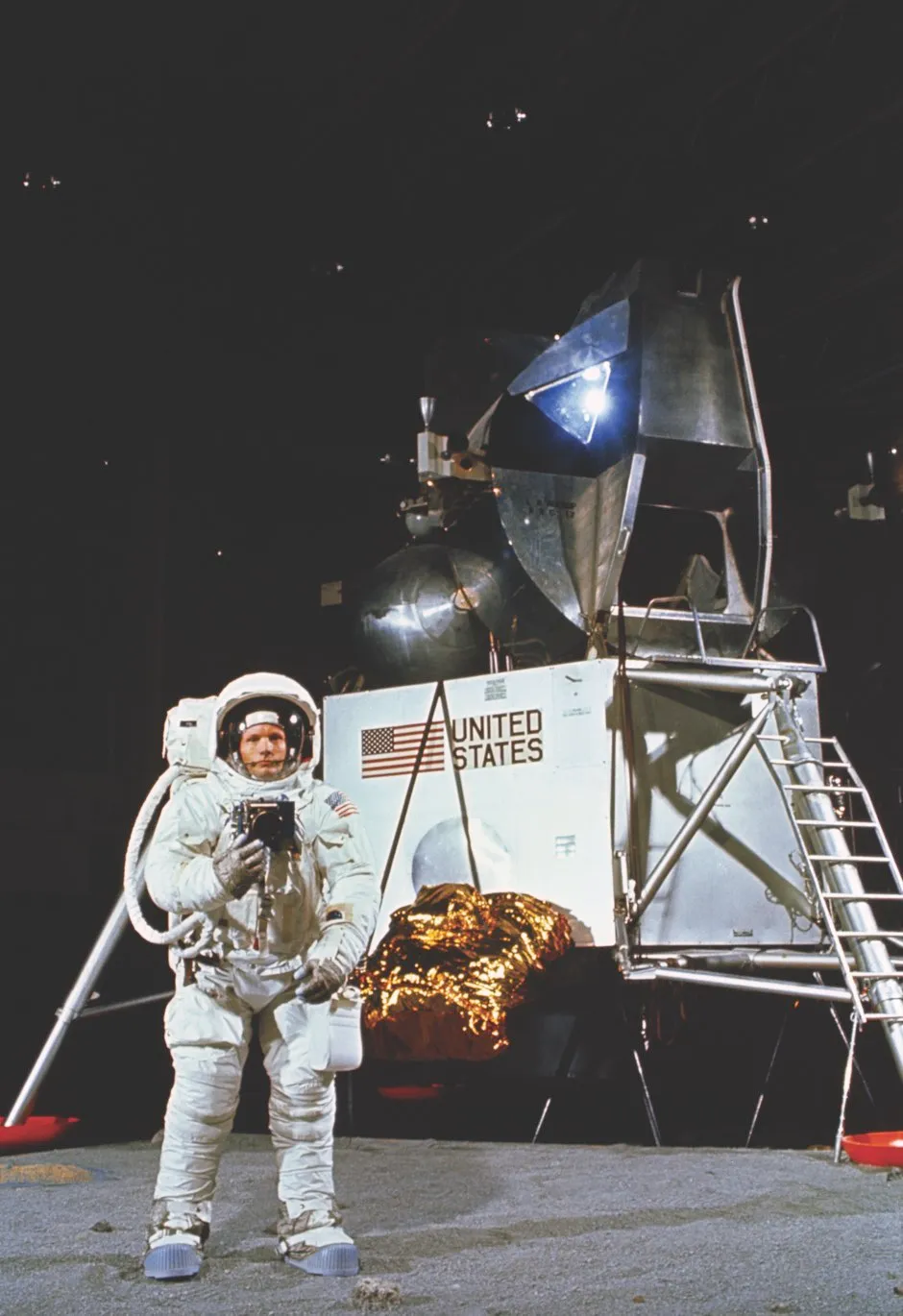
Some Moon landing deniers claim that bungee harnesses or slow-motion photography were used to make it look as if the astronauts were moving in the low gravity of the Moon. Some have even gone so far as to suggest that Stanley Kubrick directed it.
Alas, while entertaining, these ideas have since been put to the test – most prominently by the TV show MythBusters – and roundly debunked.
“If the astronauts had been filmed in slow-mo, then their arm movements would have been slowed as well, but you can see in the video they’re not,” says Plait.
Similarly, tests on Earth with bouncing astronauts in bungee harnesses show that parts of the spacesuit not directly attached to the harness, such as the helmet assembly, waggle around much faster in our planet’s gravity than they would in the feeble gravity of the Moon – and much faster than they do in the Apollo footage. In the image above, which is perhaps the origin of the theory, Neil Armstrong is undergoing training at NASA.
“The American flag was flapping, but there’s no wind on the Moon”

First things first – the flag was not flapping! It’s correct that there’s no wind on the Moon (and indeed no atmosphere), which is why the nylon flag was mounted using not just a pole but also a horizontal bar, so that it didn’t unceremoniously droop.
“Any object hanging from a bar will swing back and forth a long time after being bumped, as the flag was, by an astronaut,” says Oberg. On Earth, the swinging would die away quickly because of air resistance. But in the lunar vacuum it persisted, giving the illusion of a breeze.
Other than this, the flag was eerily immobile, even holding its crumpled shape in the Moon’s low gravity.
“Who was filming Neil Armstrong stepping onto the Moon?”
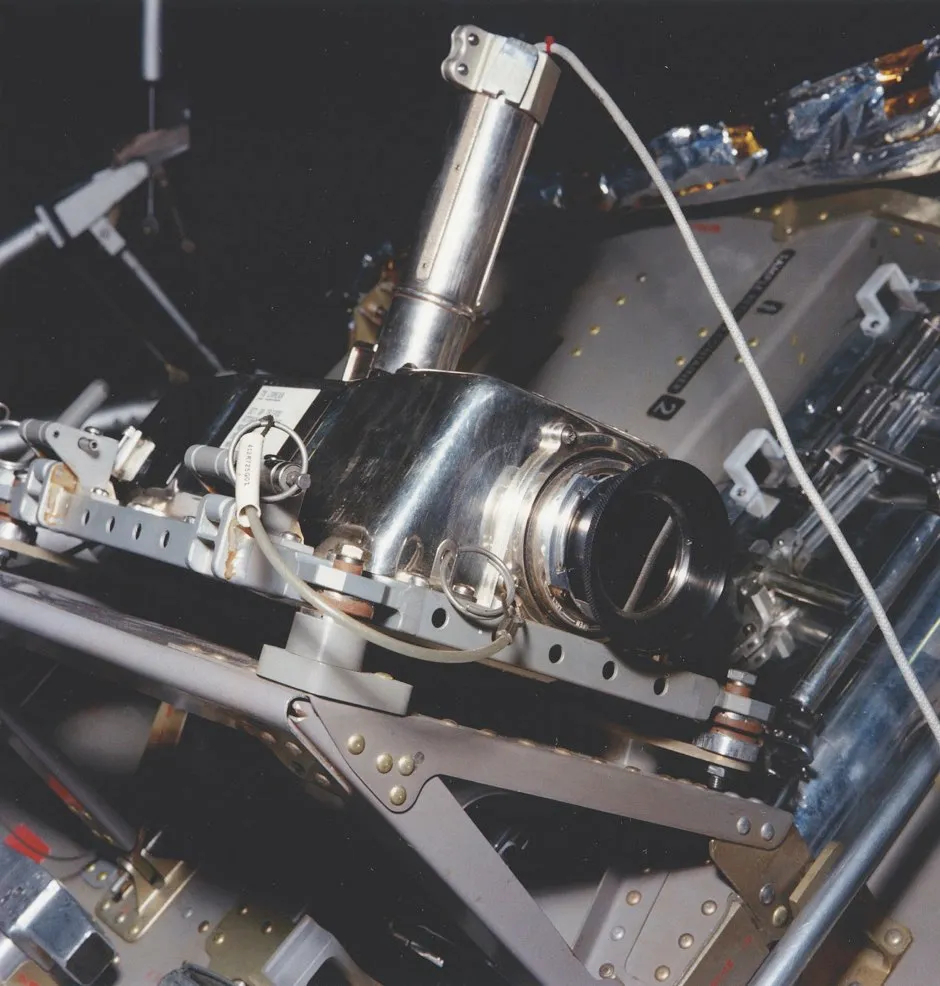
That’s probably the easiest to answer of all. The Lunar Module was equipped with a black-and-white television camera, externally mounted and trained on the descent ladder.
The camera was stowed during the descent with other equipment behind a panel on the outside of the Lunar Module. Just before his moonwalk, Armstrong pulled a cord, allowing the panel to drop down, while Aldrin switched the camera on from inside.
This enabled an estimated 600 million people around the world to watch as Armstrong climbed down the ladder and uttered those now famous words: “That’s one small step for [a] man, one giant leap for mankind.”
Read more about the people who walked on the Moon:
- Neil Armstrong: Apollo 11 mission commander
- John Glenn - the space pioneer's life in pictures
- The last man on the Moon: Gene Cernan in pictures
“There are identical backgrounds in some of the photos. A painted backdrop was used”
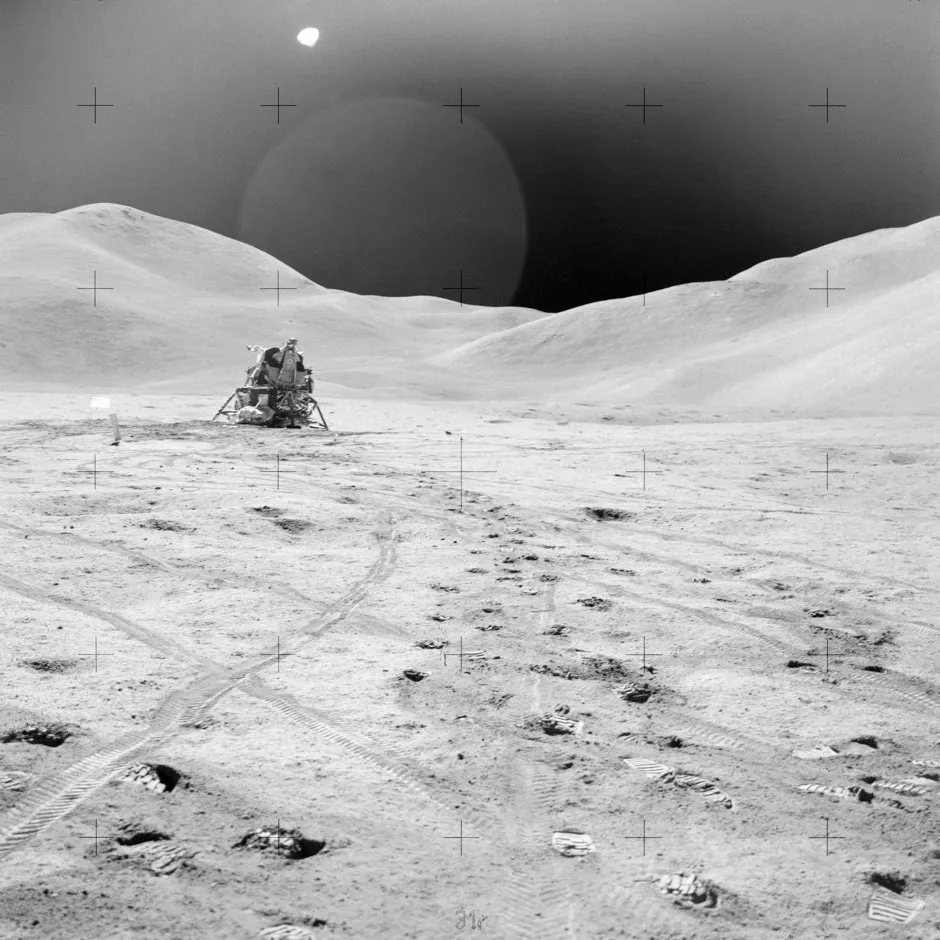
It’s correct that some of the backgrounds are identical – but this doesn’t imply by any stretch that a painted backdrop was used. It’s just a perspective effect that happens when the background is very far away.
“This is exactly the same thing you see when you’re driving and nearby trees whizz by, but the distant mountains move slowly,” says Plait. “Two photos taken a few yards apart will show different foregrounds, but the background hardly moves at all.”
We don’t immediately register this effect in Apollo photos, possibly because the abstract shape of the Moon’s features means that a distant mountain looks much the same as a nearby hill, making it easy to think the background’s much nearer than it actually is. The true lie of the lunar land has since been confirmed by orbital mapping.
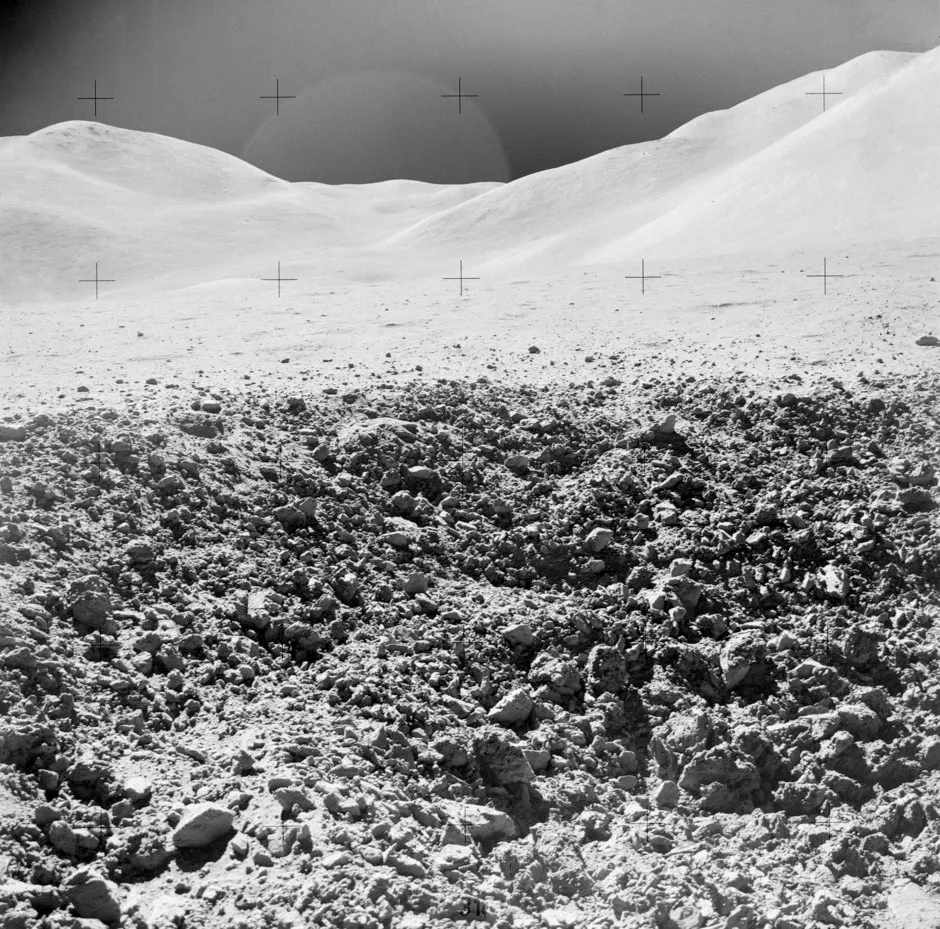
And another thing…
If you’re still not convinced, here are five more explanations to put the nail in the coffin of the Apollo conspiracy theories
Whistle-blowers (or lack thereof) - The Apollo program was a truly mammoth undertaking, combining the efforts of more than 400,000 individuals, and thousands of private companies. Maintaining secrecy would have meant each and every one of these people keeping schtum during the 11 years that the project ran, and for the 50 years that have elapsed since. Sound reasonable?
Retroreflectors - Each Apollo lander left a ‘retroreflector’ on the lunar surface – a mirrored device to bounce back light to its source. Anyone with a powerful enough laser can aim it at one of these reflectors and, in principle, measure the light travel time to the Moon and back, revealing its distance – and proving the Apollo missions actually went there.
Lunar surveys - NASA launched its Lunar Reconnaissance Orbiter in 2009 to map the Moon’s surface in detail. It returned images of Apollo’s landing sites, showing the Lunar Module descent stages, buggies, flags and astronaut footprints.
Moon rocks - The six Apollo missions that made it to the Moon’s surface brought back 380kg of rock samples. These have been found to be 200 million years older than any Earth rocks, and bear no signs of atmospheric or water erosion.
Independent tracking - Amateur astronomers used optical telescopes and basic radio equipment to track the Apollo missions in flight. And if they could do it, you can bet the Soviet Union was watching, and would have been well aware of any jiggery-pokery.
Follow Science Focus onTwitter,Facebook, Instagramand Flipboard